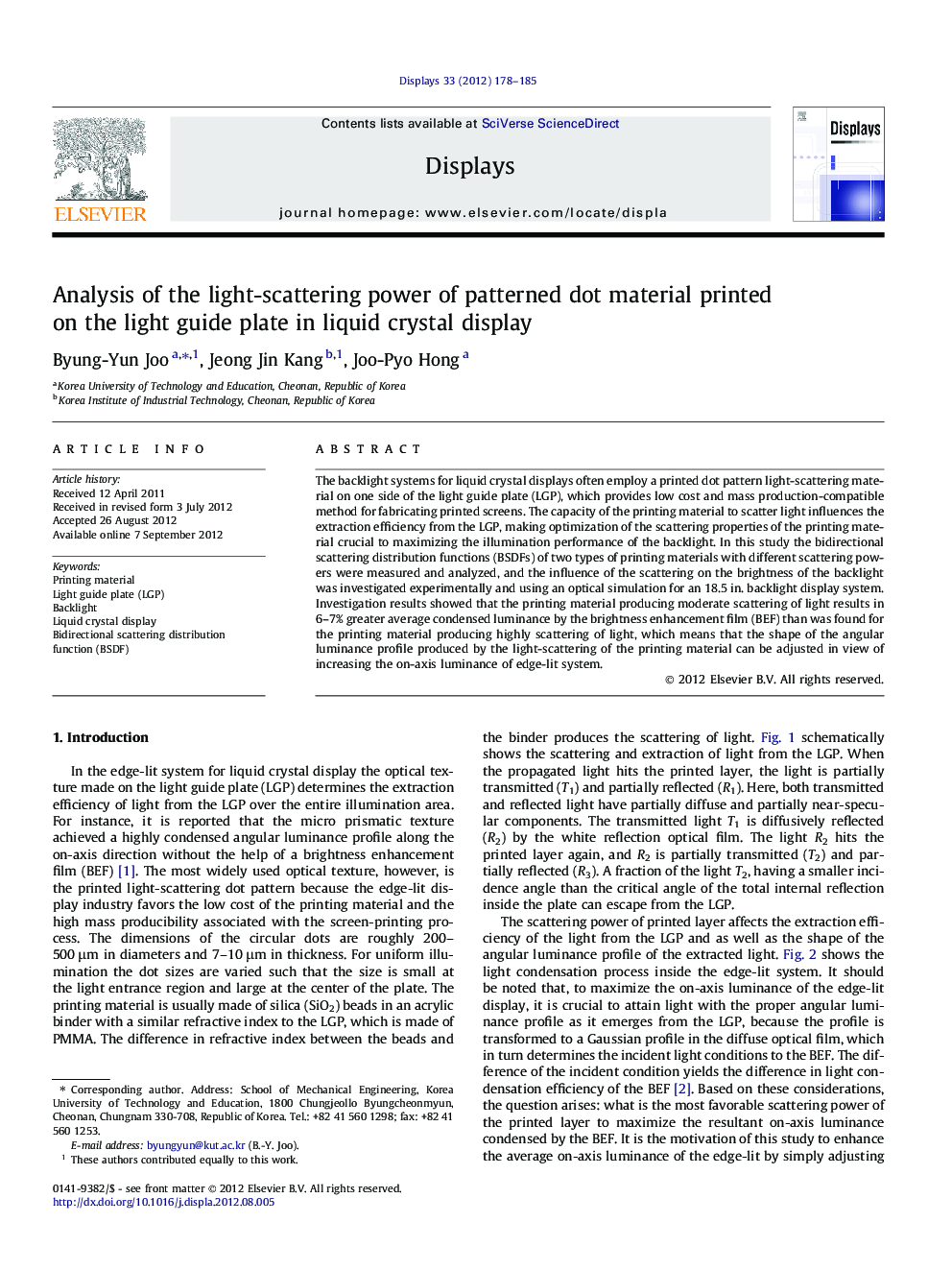| Article ID | Journal | Published Year | Pages | File Type |
|---|---|---|---|---|
| 540569 | Displays | 2012 | 8 Pages |
The backlight systems for liquid crystal displays often employ a printed dot pattern light-scattering material on one side of the light guide plate (LGP), which provides low cost and mass production-compatible method for fabricating printed screens. The capacity of the printing material to scatter light influences the extraction efficiency from the LGP, making optimization of the scattering properties of the printing material crucial to maximizing the illumination performance of the backlight. In this study the bidirectional scattering distribution functions (BSDFs) of two types of printing materials with different scattering powers were measured and analyzed, and the influence of the scattering on the brightness of the backlight was investigated experimentally and using an optical simulation for an 18.5 in. backlight display system. Investigation results showed that the printing material producing moderate scattering of light results in 6–7% greater average condensed luminance by the brightness enhancement film (BEF) than was found for the printing material producing highly scattering of light, which means that the shape of the angular luminance profile produced by the light-scattering of the printing material can be adjusted in view of increasing the on-axis luminance of edge-lit system.
► We measured the scattering of light of the printed material on the light guide plate. ► We made the optical simulation backlight model including the printed material. ► We discussed the effect of scattering power of the material on the brightness.
